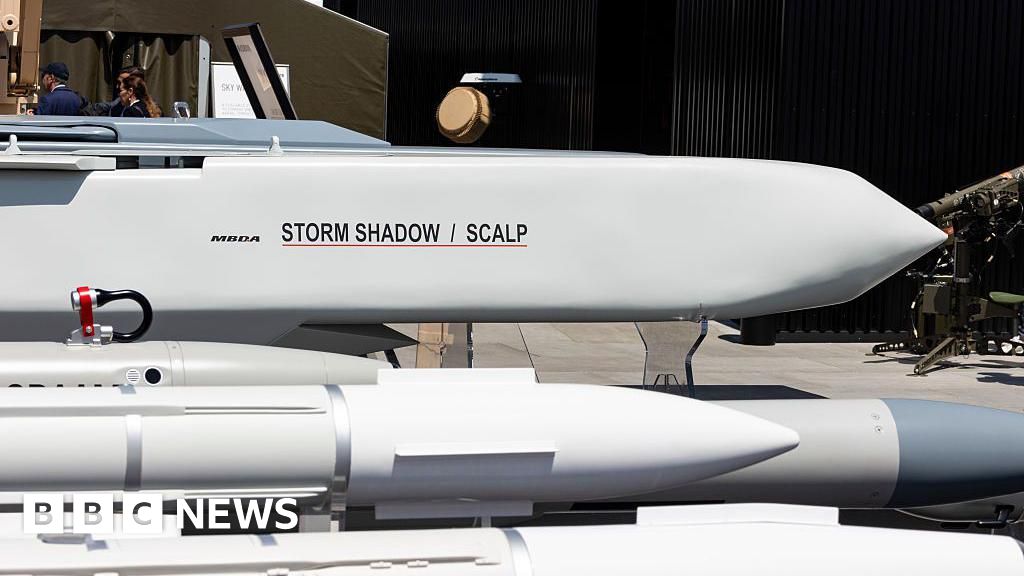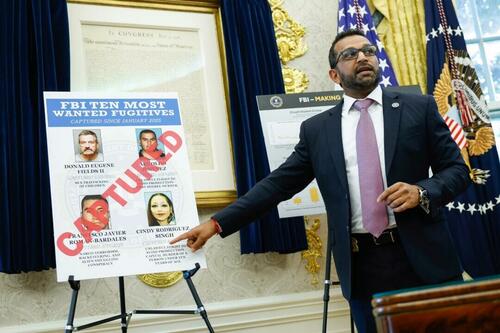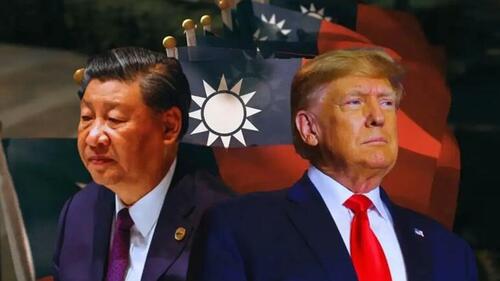Why Trump made breakthrough in Gaza but can’t with Putin over Ukraine
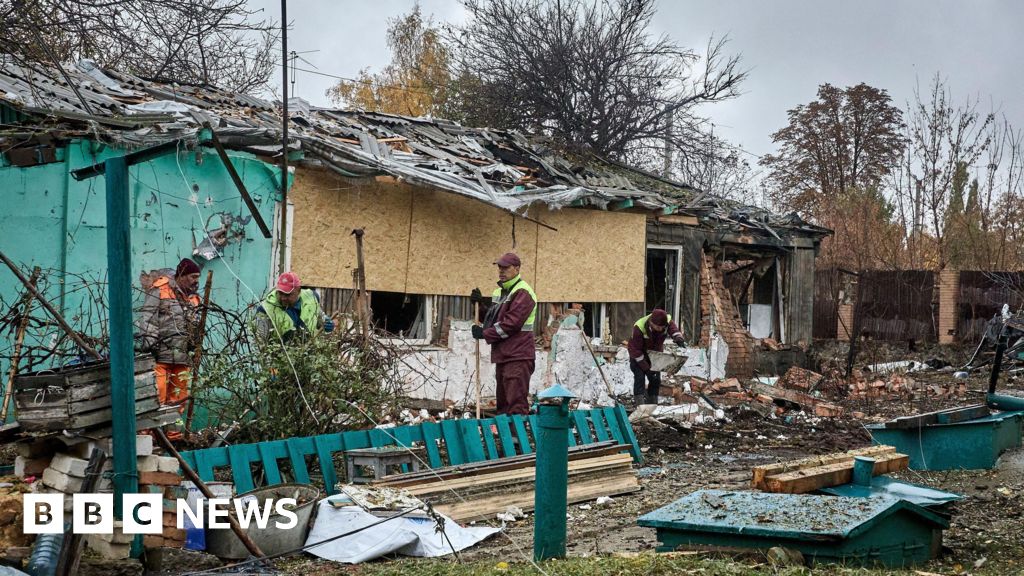
Anthony ZurcherNorth America correspondent

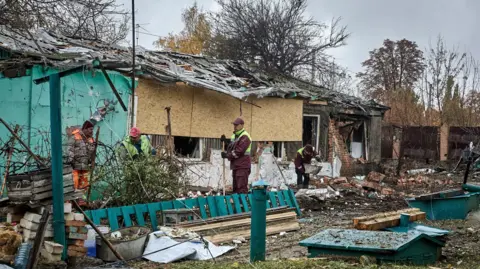 EPA
EPA
Reports of an impending US-Russia leadership summit have been greatly exaggerated, it seems.
Just days after Donald Trump said he planned to meet Russian President Vladimir Putin in Budapest – “within two weeks or so” – the summit has been suspended indefinitely.
A preliminary get-together by the two nations’ top diplomats has been cancelled, too.
“I don’t want to have a wasted meeting,” President Trump told reporters at the White House on Tuesday afternoon. “I don’t want to have a waste of time, so I’ll see what happens.”
The on-again, off-again summit is just the latest twist in Trump’s efforts to broker an end to war in Ukraine – a subject of renewed focus for the US president after he arranged a ceasefire and hostage release deal in Gaza.
While making remarks in Egypt last week to celebrate that ceasefire agreement, Trump turned to Steve Witkoff, his lead diplomatic negotiator, with a new request.
“We have to get Russia done,” he said.
However, the circumstances that aligned to make a Gaza breakthrough possible for Witkoff and his team may be difficult to replicate in a Ukraine war that has been raging for nearing four years.
Less leverage
According to Witkoff, the key to unlocking a deal was Israel’s decision to attack Hamas negotiators in Qatar. It was a move that infuriated America’s Arab allies but gave Trump leverage to pressure Israeli Prime Minister Benjamin Netanyahu into making a deal.
Trump benefited from a long record of siding with Israel dating back to his first term in office, including his decision to move the US embassy to Jerusalem, to change America’s position on the legality of Israeli settlements in the West Bank and, more recently, his support for Israel’s military campaign against Iran.
The US president, in fact, is more popular among Israelis than Netanyahu – a position that gave him unique influence over the Israeli leader.
Add in Trump’s political and economic ties to key Arab players in the region, and he had a wealth of diplomatic muscle to force an agreement.
In the Ukraine war, by contrast, Trump has much less leverage. Over the past nine months, he has swung between attempts to strong-arm Putin and then Zelensky, all with little seeming effect.
Trump has threatened to impose new sanctions on Russian energy exports and to provide Ukraine with new long-range weapons. But he has also recognised that doing so could disrupt the global economy and further escalate the war.
Meanwhile, the president has publicly berated Zelensky, temporarily cutting off intelligence-sharing with Ukraine and suspending arms shipments to the country – only to then back off in the face of concerned European allies who warn a Ukrainian collapse could destabilise the entire region.
Trump loves to tout his ability to sit down and hammer out deals, but his face-to-face meetings with both Putin and Zelensky haven’t seemed to move the war any closer to a resolution.

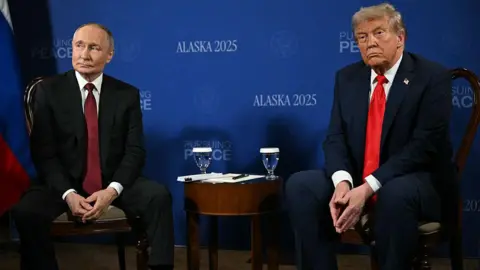 Getty Images
Getty Images
Putin may actually be using Trump’s desire for a deal – and belief in in-person deal-making – as a means of influencing him.
In July, Putin agreed to a summit in Alaska just as it appeared likely that Trump would sign off on congressional sanctions package backed by Senate Republicans. That legislation was subsequently put on hold.
Last week, as reports spread that the White House was seriously contemplating shipping Tomahawk cruise missiles and Patriot anti-air batteries to Kyiv, the Russian leader called Trump who then touted the possible summit in Budapest.
The next day, Trump hosted Zelensky at the White House, but left empty-handed after a reportedly tense meeting.
Trump insisted that he was not being played by Putin.
“You know, I’ve been played all my life by the best of them, and I came out really well,” he said.

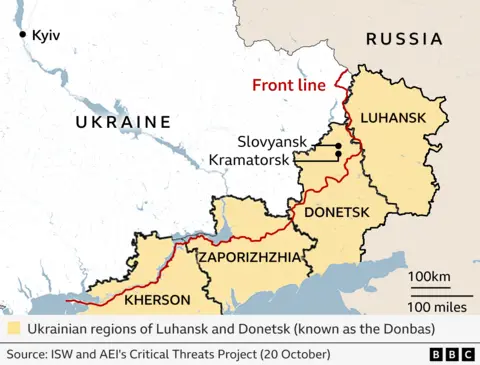
But the Ukrainian leader later made note of the sequence of events.
“As soon as the issue of long-range mobility became a little further away for us – for Ukraine – Russia almost automatically became less interested in diplomacy,” he said.
So, in a matter of days, Trump has bounced from entertaining the prospect of sending missiles to Ukraine to planning a Budapest summit with Putin and privately pressuring Zelensky to cede all of Donbas – including territory Russia has been unable to conquer.
He has finally settled on calling for a ceasefire along current battle lines – something Russia has refused to accept.
On the campaign trail last year, Trump promised that he could end the Ukraine war in a matter of hours. He has since abandoned that pledge, saying that ending the war is proving harder than he expected.
It has been a rare acknowledgement of the limits of his power – and the difficulty of finding a framework for peace when neither side wants, or can afford to, give up the fight.
Recent Top Stories
Sorry, we couldn't find any posts. Please try a different search.







